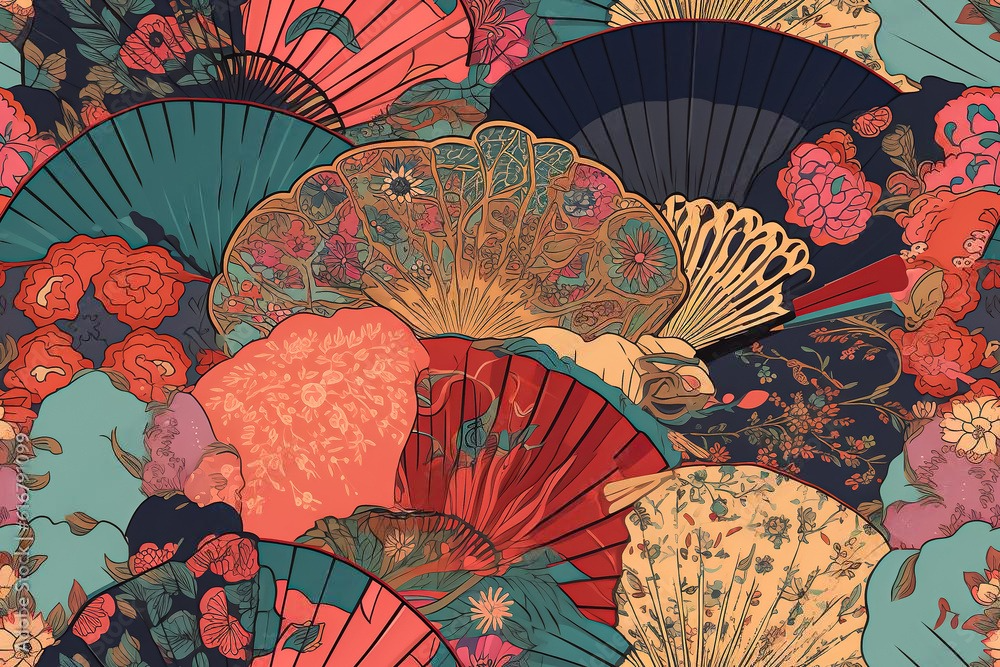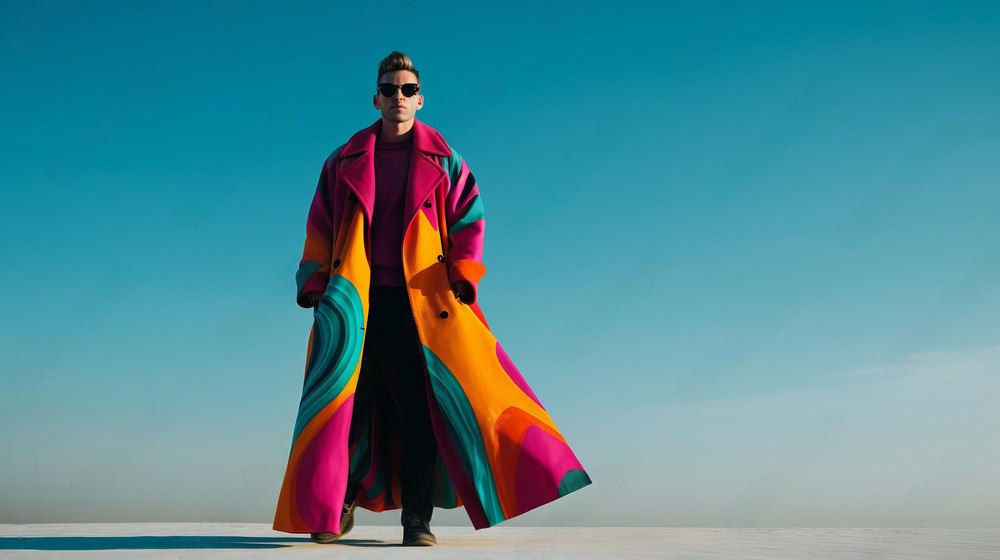Welcome to a journey back in time, when fashion was fearless, vibrant, and unapologetically bold. The turn of the millennium marked an era of sartorial expression unlike any other – the Y2K fashion scene.
In the preceding piece “Y2K Fashion Style Breakthrough 101: Embracing Nostalgia,” we learned about the definition of Y2K fashion style, its history, essential components, popular brands and designers, and notable celebrity trendsetters. This article delves into the resurgence of Y2K fashion, its impact on pop culture and media, its influence on modern style trends, the obstacles and feedback in adopting Y2K fashion, as well as the future prospects of this fashion revival.
Table of Contents
Unveiling the Timeless Allure of Y2K Fashion in Pop Culture and Media
In the ever-shifting world of fashion, trends emerge and fade with lightning speed. Yet, amidst this relentless change, one phenomenon has risen above the rest, captivating generations and leaving an indelible imprint on popular culture and media – the enduring allure of Y2K fashion.
Y2K Fashion in Pop Culture: A Lasting Legacy
Beyond the confines of the runway, Y2K fashion permeated every facet of popular culture, leaving an indelible imprint on music, film, and television.
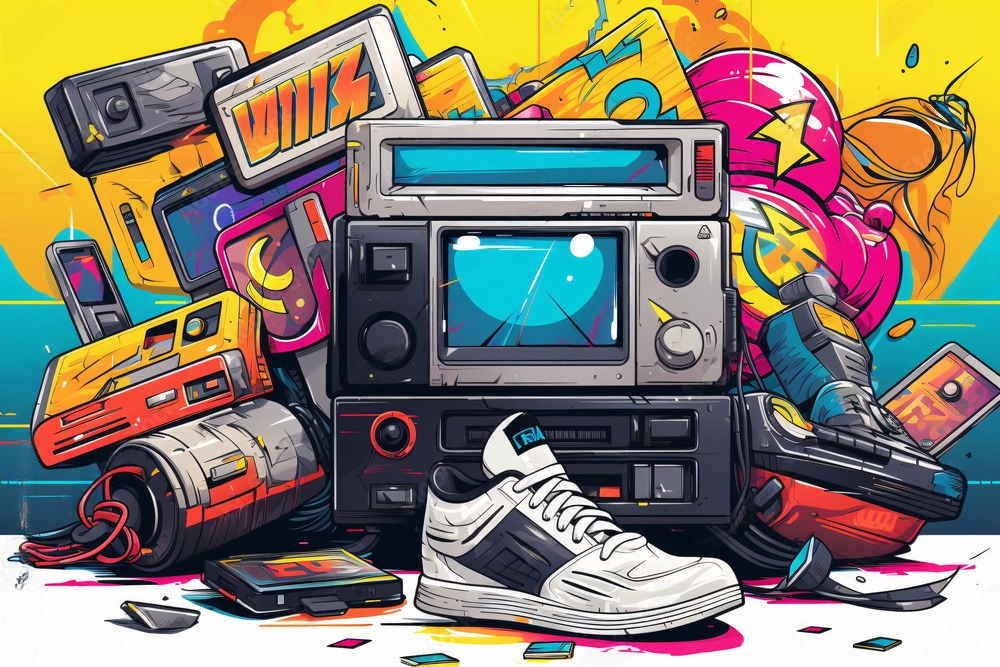
1. Music Videos as Fashion Manifestos
In the realm of music videos, Y2K fashion served as a visual manifesto, with artists utilizing style as a powerful form of self-expression. From Britney Spears’ iconic metallic ensembles to Destiny’s Child’s coordinated tracksuits, music videos became a playground for experimentation, setting the stage for a new era of fashion iconography.
2. Silver Screen Spectacle
In film, Y2K fashion took center stage, shaping the aesthetic sensibilities of cinematic narratives. Whether evoking the dystopian futurism of “The Matrix” or the high-octane glamour of “Charlie’s Angels,” costume designers embraced the ethos of the era, creating visual spectacles that continue to inspire and influence contemporary fashion.
3. Television’s Fashion Renaissance
Television series of the Y2K era also played a pivotal role in shaping fashion trends, with iconic characters becoming synonymous with sartorial innovation. From the preppy chic of “Sex and the City” to the retro-futuristic allure of “Alias,” television served as a breeding ground for style evolution, cementing Y2K fashion as a cultural touchstone for generations to come.
The Resurgence of Y2K Fashion: A Modern Renaissance
While the heyday of Y2K fashion may have come and gone, its influence continues to reverberate throughout the fashion industry, which has experienced a resurgence in recent years.

1. Nostalgic Revival
Fuelled by a wave of nostalgia, Y2K fashion has experienced a resurgence among millennials and Gen Z consumers, who seek to recapture the spirit of the era through vintage-inspired looks and modern reinterpretations of classic trends.
2. Sustainable Innovation
In an age where sustainability reigns supreme, Y2K fashion has undergone a sustainable makeover, with designers embracing eco-friendly materials and ethical production practices to create garments that are as environmentally conscious as they are stylish.
3. Digital Revolution
With the rise of social media and digital platforms, Y2K fashion has found new life online, as influencers and tastemakers pay homage to the era through curated content and digital styling tips, ensuring that its legacy endures in the digital age.
Y2K fashion stands as a testament to the enduring power of style to transcend time and captivate the collective imagination. From its inception in the early 2000s to its modern-day resurgence, Y2K fashion continues to shape the cultural landscape, leaving an indelible mark on pop culture and media for generations to come.
Unveiling the Influence of Y2K Fashion on Contemporary Style
In the ever-evolving realm of fashion, trends emerge, fade, and often resurface with a modern twist. One such trend that has significantly impacted contemporary style is Y2K fashion. Originating from the late 1990s and early 2000s, Y2K fashion embodies a unique blend of nostalgia, futurism, and technological advancements. In this comprehensive exploration, we delve into the profound impact of Y2K fashion on today’s sartorial landscape.
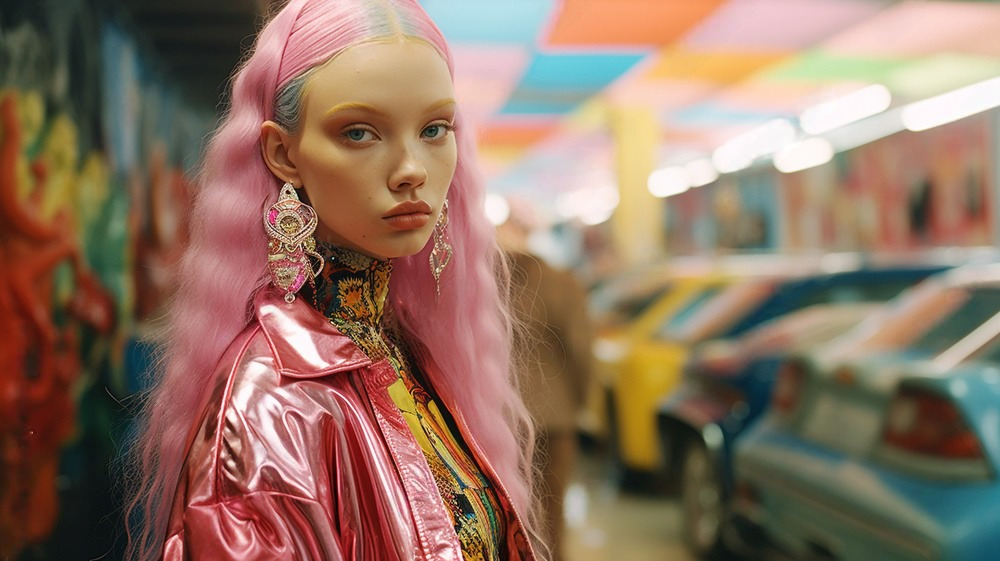
Embracing the Techno-Aesthetic: Y2K Inspirations in Contemporary Apparel
Nostalgia Reimagined: Resurgence of Y2K Elements
Y2K fashion represents a fusion of retro-futuristic elements, characterized by bold colors, futuristic materials, and avant-garde silhouettes. One of the most notable influences is the resurgence of cyberpunk aesthetics, marked by metallic fabrics, reflective surfaces, and intricate hardware details. Brands and designers worldwide have embraced this nostalgic yet forward-thinking vibe, infusing it into their collections.
Futuristic Fabrics and Textures
Central to Y2K fashion is the utilization of innovative materials and textures that exude a sense of modernity and innovation. From iridescent PVC to sleek latex, contemporary designers draw inspiration from the era’s fascination with technological progress and its visual representation in fashion. These futuristic fabrics not only pay homage to Y2K aesthetics but also offer a fresh perspective on materiality and garment construction.
Cultural Impact and Celebrity Endorsements: Influence of Pop Culture Icons
The resurgence of Y2K fashion can be attributed in part to its prominent presence in pop culture. Celebrities and influencers, ranging from musicians to actors, have embraced the trend, showcasing iconic looks reminiscent of the early 2000s. Social media platforms serve as catalysts for disseminating these styles to a global audience, driving demand for Y2K-inspired apparel and accessories.
Redefining Fashion Norms: Gender Fluidity and Self-Expression
Y2K fashion transcends traditional gender boundaries, offering a space for self-expression and individuality. Androgynous silhouettes, statement accessories, and vibrant color palettes empower individuals to experiment with their style without conforming to societal norms. This inclusive approach to fashion resonates deeply with contemporary consumers, fostering a sense of belonging and authenticity within the community.
Sustainable Practices and Ethical Fashion
Reimagining Vintage: Sustainable Consumption
In an era marked by environmental consciousness, Y2K fashion intersects with the principles of sustainability and ethical consumption. The resurgence of vintage Y2K pieces not only reduces waste but also celebrates the craftsmanship and design ethos of past eras. By embracing pre-loved garments and upcycling outdated styles, fashion enthusiasts contribute to a circular economy while making a style statement that is both unique and eco-conscious.
Ethical Production and Transparent Supply Chains
As consumers demand greater transparency and accountability from fashion brands, ethical production practices have become paramount. Forward-thinking designers prioritize fair labor practices, environmentally friendly materials, and transparent supply chains, aligning with the values of socially conscious consumers. By supporting brands that uphold these principles, individuals can make a positive impact on both the fashion industry and the planet.
The Enduring Legacy of Y2K Fashion
In conclusion, the impact of Y2K fashion on contemporary style transcends mere trendiness, embodying a cultural phenomenon that resonates with diverse audiences worldwide. From its futuristic aesthetics to its embrace of sustainability and inclusivity, Y2K fashion continues to shape the way we perceive and engage with fashion in the 21st century. By embracing its nostalgic charm and forward-thinking ethos, we pay homage to the past while paving the way for a more innovative and inclusive future in fashion.
Challenges and Criticisms of Y2K Fashion: Navigating the Complexities of a Trend
While Y2K fashion has garnered widespread popularity and acclaim, it is not without its challenges and criticisms. As with any trend, the resurgence of Y2K aesthetics has sparked debates and discussions surrounding its cultural significance, environmental impact, and inclusivity. In this exploration, we delve into the complexities of Y2K fashion, addressing key challenges and criticisms that merit consideration.

Cultural Appropriation and Commodification
Appropriation vs. Appreciation: Cultural Sensitivity in Fashion
One of the primary criticisms leveled against Y2K fashion is its potential for cultural appropriation, particularly when elements of marginalized cultures are commodified and stripped of their cultural context. From the appropriation of traditional garments to the adoption of specific hairstyles and accessories, there is a fine line between appreciation and exploitation. Designers and consumers alike need to approach Y2K-inspired fashion with cultural sensitivity and respect for diverse traditions.
Tokenism and Stereotyping
In the pursuit of authenticity and nostalgia, Y2K fashion runs the risk of perpetuating stereotypes and tokenizing cultural symbols. Whether through the use of tribal prints, religious motifs, or ethnic-inspired accessories, designers must exercise caution to avoid reducing entire cultures to mere fashion trends. By engaging in meaningful dialogue and collaboration with communities whose cultures inspire their designs, fashion brands can ensure that their creative expression is rooted in mutual respect and understanding.
Environmental Impact and Fast Fashion
Fast Fashion and Disposable Culture
The fast-paced nature of Y2K fashion trends, coupled with the rise of fast fashion, contributes to a culture of disposability and overconsumption. As consumers seek to emulate the latest Y2K-inspired looks, there is a temptation to prioritize quantity over quality, leading to increased textile waste and environmental degradation. Addressing these issues requires a shift towards sustainable production practices and conscious consumer behavior.
Textile Waste and Pollution
The production and disposal of clothing contribute significantly to environmental pollution and resource depletion. Y2K fashion, with its emphasis on novelty and experimentation, often relies on synthetic materials and mass-production techniques that have adverse environmental consequences. From chemical pollution during manufacturing to textile waste in landfills, the environmental footprint of Y2K-inspired fashion must be carefully considered and mitigated through eco-friendly alternatives and circular fashion initiatives.
Lack of Diversity and Representation
Exclusionary Beauty Standards
Critics of Y2K fashion argue that its celebration of nostalgia and retro aesthetics can reinforce exclusionary beauty standards, particularly concerning body size, race, and gender identity. The glorification of ultra-thin models, Eurocentric features, and heteronormative ideals perpetuates harmful stereotypes and alienates individuals whose identities do not align with mainstream beauty norms. To foster inclusivity and representation, fashion brands must embrace diversity in their marketing campaigns, runway shows, and product offerings.
Accessibility and Affordability
Y2K fashion, often associated with luxury brands and designer labels, can be inaccessible to individuals with limited financial means. The high cost of designer clothing and accessories perpetuates socioeconomic disparities and reinforces class divides within the fashion industry. Moreover, the emphasis on exclusivity and status symbols undermines efforts to democratize fashion and make it more inclusive and accessible to diverse communities.
Navigating the Complexities of Y2K Fashion
In conclusion, while Y2K fashion offers a visually captivating and culturally rich aesthetic, it is essential to acknowledge and address the challenges and criticisms that accompany its resurgence. From concerns about cultural appropriation and environmental impact to issues of diversity and representation, the complexities of Y2K fashion require thoughtful reflection and proactive measures to promote ethical and inclusive practices. By engaging in meaningful dialogue, fostering collaboration, and prioritizing sustainability and social responsibility, we can navigate the complexities of Y2K fashion.
The Future of Y2K Fashion: Evolution, Innovation, and Sustainability
As we look ahead to the future of fashion, the resurgence of Y2K aesthetics promises to continue shaping the sartorial landscape with its blend of nostalgia, futurism, and cultural relevance. However, the future of Y2K fashion extends beyond mere trendiness, encompassing themes of innovation, sustainability, and social responsibility. In this exploration, we delve into the evolving trajectory of Y2K fashion and the possibilities it holds for the fashion industry and beyond.
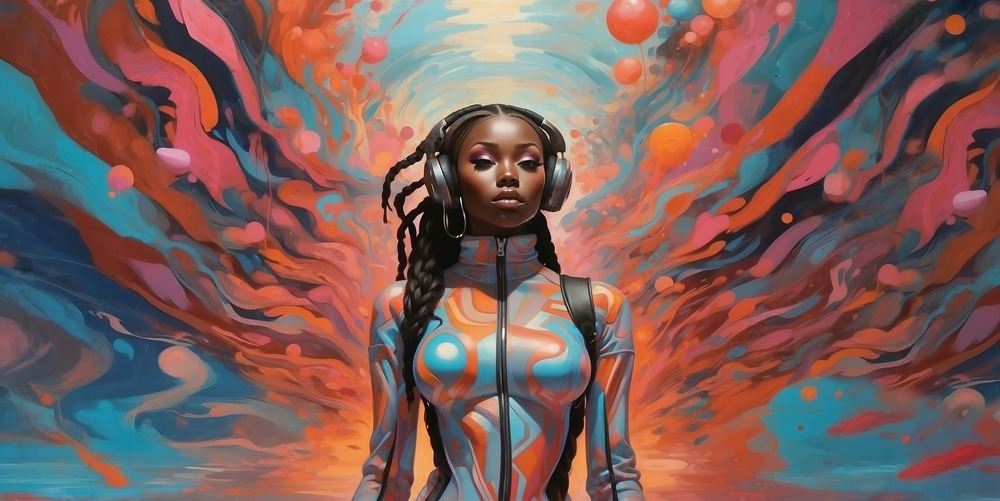
Technological Integration and Digital Innovation
Virtual Fashion and Metaverse Exploration
One of the most intriguing developments in the future of Y2K fashion is the integration of technology and digital innovation. As virtual spaces such as the metaverse gain prominence, fashion brands are exploring new avenues for expression and engagement through virtual fashion shows, digital avatars, and augmented reality experiences. This convergence of fashion and technology not only expands the creative possibilities but also redefines the way we interact with and consume fashion in the digital age.
Sustainable Tech-Driven Solutions
Technological advancements offer unprecedented opportunities to address sustainability challenges within the fashion industry. From blockchain technology for supply chain transparency to 3D printing for on-demand production, innovative solutions are emerging to minimize waste, reduce environmental impact, and enhance the traceability of materials. By harnessing the power of technology, Y2K fashion can pave the way for a more sustainable and transparent fashion ecosystem.
Inclusive Design and Representation
Diversity as a Driving Force
The future of Y2K fashion is inherently intertwined with the pursuit of inclusivity and representation. Recognizing the diversity of voices, experiences, and identities within society, fashion brands are embracing inclusive design principles that celebrate individuality and authenticity. From inclusive sizing and adaptive clothing to gender-neutral collections and diverse casting, the emphasis on diversity fosters a sense of belonging. It empowers individuals to express themselves freely through fashion.
Community-Centric Collaboration
Collaboration lies at the heart of inclusive design, with fashion brands partnering with communities, activists, and marginalized groups to co-create collections that reflect diverse perspectives and lived experiences. By amplifying marginalized voices and challenging traditional beauty norms, Y2K fashion can catalyze social change and empowerment, driving greater representation and inclusivity within the industry and beyond.
Circular Economy and Sustainable Practices
Embracing Circular Fashion Models
As awareness of environmental issues grows, the future of Y2K fashion is intrinsically linked to the principles of circularity and sustainability. Circular fashion models, such as rental, resale, and repair, offer viable alternatives to traditional linear consumption patterns, extending the lifecycle of clothing and minimizing waste. By embracing circularity, Y2K fashion can transition towards a regenerative and restorative approach that prioritizes resource efficiency and environmental stewardship.
Innovation in Materials and Manufacturing
Advancements in sustainable materials and manufacturing techniques are driving the shift towards a more eco-friendly fashion industry. From bio-based textiles to closed-loop production processes, innovative solutions are emerging to reduce the environmental footprint of Y2K-inspired fashion while maintaining aesthetic appeal and quality. By investing in research and development, fashion brands can pioneer new materials and technologies that push the boundaries of sustainability and creativity.
The future of Y2K fashion holds boundless possibilities for innovation, sustainability, and inclusivity. By embracing technological integration, inclusive design, and circular economy principles, Y2K fashion can evolve into a force for positive change within the fashion industry and society at large. As we embark on this journey towards a more sustainable and inclusive future, let us envision a world where fashion reflects the diverse tapestry of humanity and serves as a catalyst for empowerment, expression, and social impact.


